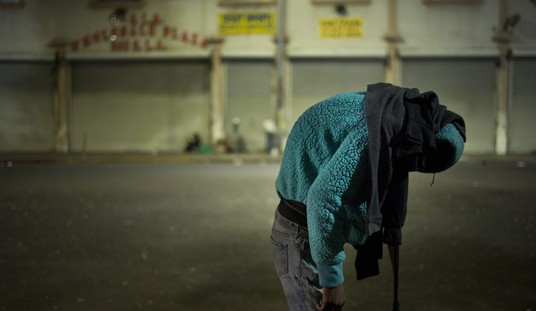P.G. Wodehouse may have been the funniest English language writer in the 20th century. He was certainly the most elegant and light-hearted one — a kind of Wolfgang Amadeus Mozart of comedy. His most famous comedy pair of Bertie Wooster and Jeeves, Bertie’s personal gentleman, is constantly faced with one looming threat to the good life in Edwardian London: Bertie’s aunts.
These are formidable women. Yes, Bertie draws a sharp line between good aunts and bad aunts. Aunt Agatha is the human terror who is rumored to eat broken glass, wear barbed wire next to her skin, and offer human sacrifices at the time of the full moon. When Aunt Agatha comes hopping after Bertie with her hatchet, he flees across the ocean to New York City to wait out the storm with the faithful Jeeves. And no matter what Bertie does, Aunt Agatha disapproves, considering him to be a flighty flibberty-gibbet and a bohunkus. Which he is, of course.
But Aunt Dahlia, Bertie’s good and deserving aunt, manages to get him into even more trouble. Aunt Dahlia still harks back to her youthful days in the fox-hunting fields. On a good day her forceful voice can be heard across two copses and a spinney, a habit learned in the hot pursuit of the English fox. Dahlia constantly persuades Bertie to steal antique silver cow-creamers or modern eyesore paintings — always for a perfectly good reason, of course. When she runs out of reasons, she’s always ready for a spot of good old blackmail.
The biggest trouble is that Bertie is also surrounded by young and beautiful aunts-to-be. He constantly falls in love with willful young things, only to find out that they want to mold his soul like a piece of clay, or stop him from drinking cocktails, or make him read Spinoza instead of penny murder mysteries. Jeeves must rescue him from these deadly entanglements.
At other times, Bertie becomes the plaything of a younger Aunt Dahlia, a beautiful young woman with an imperious temperament and a wonderful sense of humor. She blackmails him into shinnying up a ladder in the dark of night at an English country house to puncture the hot water bottle of Sir Roderick Glossop, the famous brain specialist, who, upon waking up in a wet and steaming bed, promptly decides that Bertie is ready for the looney bin.
It’s the women in Bertie’s life who are the real terrors, old and young, lovable or intimidating. Most of Bertie’s male friends are feathery lightweights by comparison to the females of the species, content “just to exist beautifully from day to day,” as Bertie likes to say it.
I have never believed the feminist myth of the weak pushover woman. I don’t think such women exist; if they do, I haven’t met them. Feminists like Germaine Greer or Betty Friedan are much more like Aunt Agatha. Or maybe they take after Lady Macbeth or the Roman Empress Livia, the dragon lady who poisoned most of her younger relatives to clear the path for her chosen heir to Caesar Augustus. In every dynastic kingdom there are said to be such women.
There certainly are women who adopt the “beach bunny” disguise when it suits them, just as there are men who pretend to be helpless young children. Until they decide to grow up. Even infants aren’t goo-goo cute all the time. Ever heard of the terrible twos? Newborn babies can be as imperious as any tyrant.
So the whole “woman as victim” basis of feminist myth has always seemed hard to believe. Not that there aren’t plenty of female victims, just as there are male victims. Life can be very painful — emotionally, physically, and socially. Malicious and abusive people really do exist. After all, political correctness is itself a form of bullying. PC is our version of medieval witch-hunting, as the recent headlines make very clear.
Women are abused in some families, just as children and men are. Women also abuse other women — just as men sometimes do. Feminists often seem to be women who suffer from depression, and who have taught themselves to be in a constant state of high anger. Lesbian couples sometimes have a history of severe abuse. Which gender abuses more often, or with more traumatic effect? I don’t know. But I don’t think human biology has turned any of us into tender saplings that bend or break at the merest breath of a spring breeze.
The formidable aunt is a stock character of Victorian humor because many women of that time were like that. There’s a reason why 19th century England was named after Queen Victoria. They were largely unsentimental times. The poor lived Dickensian lives. Disasters like the Irish potato famine were not uncommon, even in the wealthier countries. Victorian sentimentality flourished mainly in fantasy, as Jane Austen made so clear in her novels. The best fiction of Victorian times always features powerhouse women.
It’s not just Wodehouse who portrayed powerful mothers, aunts, and mothers-in-law. They can be found throughout history, long before the feminist movement officially claimed to represent oppressed women. The scheming and deadly Lady Macbeth was not just a fictional character. Shakespeare’s court characters are taken from Elizabethan court life, and it was Elizabeth I who sent her rival Queen Mary to the chopping block, after all. Elizabeth had her enemies killed because that was how royals survived and conquered in her time.
In fact, modern feminism is only the most recent manifestation of the powerhouse female. Feminism was propagated by power-driven women who simply claimed (without a shred of evidence) that all women are victims. Tell that to the Last Empress of China, or Hillary Clinton, or Michelle Obama. Or any of Obama’s women commissars like Janet Napolitano. Or the Harvard feminist commissars who threw Larry Summers out of the presidency for making a non-PC remark.
Mothers and mothers-in-law played a huge role in dynastic succession struggles, because they often knew that their sons would be killed if they did not get rid of his competitors. The Ottomans at one time simply killed off all the dynastic competitors to the chosen sultan as a matter of practical policy. In the sultan’s throne room the women of the harem watched, hidden behind a screen, but they were keeping score of all of the sultan’s acts and plotting with his eunuchs. These women delighted in power, like the Empress Livia (see Robert Graves’ I, Claudius). The Ottomans finally decreed that their sultans must not marry; instead, they had concubines, whose sons were technically not entitled to inherit the throne. I doubt that it made much of a difference.
The politically powerful women of Rome were often monsters of sexual exploitation and public sadism. They were as eager to see the sadistic Coliseum spectacles of bloody murder and rapine as the men. To them, vicious cruelty was entertainment. They were not porcelain dolls.
The early Soviet Union was full of women commissars serving Lenin and Stalin. After the death of Mao Zedong, the Gang of Four who ruled China were led by Jiang Qing, Mao’s last wife. And you can be sure that today, in the hermit Stalinocracy of Kim Jong Il, women are deeply involved in plotting and scheming to decide the succession.
Some victims; some beach bunnies.









Join the conversation as a VIP Member